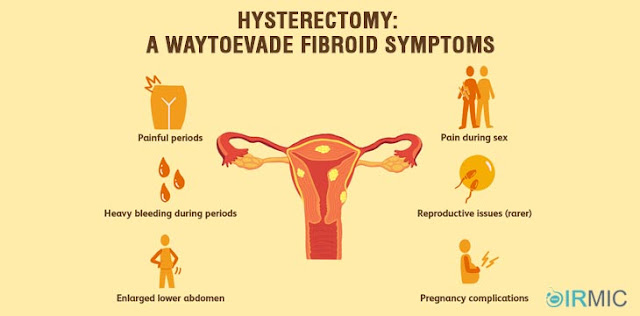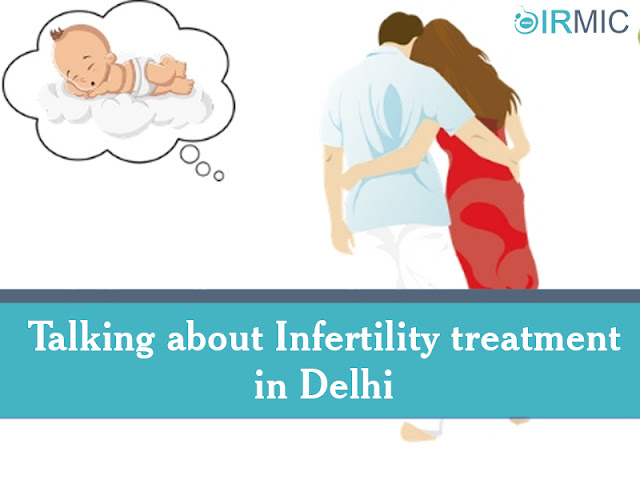Hysterectomy: A Way To Evade Fibroid Symptoms
Hysterectomy is a significant surgical method in which the uterus is
extracted. Many women choose hysterectomy to permanently settle their
fibroid signs. After the hysterectomy, menstrual bleeding ceases, pelvic
pressure is reduced, frequent urination progresses and new fibroids
cannot start. It’s also true that a woman can no longer become pregnant
after a hysterectomy. The ovaries are not significantly discarded during
a hysterectomy.
Generally, when the women are approaching menopause, the ovaries are extracted. The ovaries may also be withdrawn if they look strange or if the patient wants to reduce her chance of developing ovarian cancer later in life.
There Are Several Varieties Of Abdominal Hysterectomies:
Total abdominal hysterectomy comprises expelling the uterus and the cervix, which is the weakest part of the uterus. Women who have abnormal pap smears are usually inspired to have their cervix separated at the time of the hysterectomy.
Subtotal or supra-cervical hysterectomy entails extracting only the uppermost part of the uterus. Women who hold their cervix may have less bladder leakage and vaginal rest later in life; nevertheless, this has not been accurately proven.
Women who have had a supra-cervical hysterectomy will remain to necessitate periodic pap smears. Besides, some women will have menstrual spotting or light bleeding if endometrial glands are still buried in the cervical mass.
An abdominal hysterectomy claims general anesthesia and requires admission to the hospital. Maximum patients will stay in the clinic for three days. Rehabilitation usually takes six weeks, although some women undergo a complication from an operation that asks a longer recovery time. After an operation, the patient will have a four-inch horizontal scar near the pubic hair or bikini line.
Women with large fibroids or a big uterus may not be applicants for a laparoscopic hysterectomy. Moreover, occasionally during the operation, it is crucial to switch from a laparoscopic hysterectomy to an abdominal hysterectomy.
In the method, four one-centimeter cuts are performed in the lower abdomen: one at the stomach button, one below the bikini range near the pubic hair, and one near each hip. The abdominal cavity is filled with carbon dioxide gas. A thin, blazing telescope is placed by an incision so the experts can see the ovaries, fallopian tubes, and the uterus.
Long devices, inserted through the other cuts, are used to eliminate the uterus. A special device is used to cut the uterus into more inadequate segments for removal through the small incisions. At the end of the system, the gas is discharged and the skin incisions are blocked. You will be asleep during the process. Most women spend one night in the hospital and may need to stay back at home for two to four weeks for recovering.
Content Source :https://drrksharmaivf.in/blog/hysterectomy-a-way-to-evade-fibroid-symptoms/
Generally, when the women are approaching menopause, the ovaries are extracted. The ovaries may also be withdrawn if they look strange or if the patient wants to reduce her chance of developing ovarian cancer later in life.
Different Hysterectomy Measure
There are numerous hysterectomy surgical approaches which include the vaginal hysterectomy, an abdominal hysterectomy, and a laparoscopic hysterectomy. The choice of treatment will depend on the size of the uterus and several other factors.Vaginal Hysterectomy
A vaginal hysterectomy is accomplished by removing the uterus through the vagina rather than through surgery on the abdomen. To be qualified for a vaginal hysterectomy, the uterus must be of a genuine size and not too big. The procedure requires proper admission in the hospital and the sufferer may be asleep during the procedure and the stay may extend to spend two nights in the hospital. Post procedure, the patient may suffer from significant pain for 24 hours and mild pain for 10 days. Full healing usually takes four weeks and the sufferer will not have any blemishes on your skin. Complexities from surgery may incorporate bleeding, diseases and injury to the pipes or bladder.Abdominal Hysterectomy
In an intestinal hysterectomy, the uterus is removed through a smooth incision on the lower abdomen, called a “bikini cut.” If the uterus is very deep or if there is a wound from a more preceding surgery, it may be essential to make a vertical surgery alternatively.There Are Several Varieties Of Abdominal Hysterectomies:
Total abdominal hysterectomy comprises expelling the uterus and the cervix, which is the weakest part of the uterus. Women who have abnormal pap smears are usually inspired to have their cervix separated at the time of the hysterectomy.
Subtotal or supra-cervical hysterectomy entails extracting only the uppermost part of the uterus. Women who hold their cervix may have less bladder leakage and vaginal rest later in life; nevertheless, this has not been accurately proven.
Women who have had a supra-cervical hysterectomy will remain to necessitate periodic pap smears. Besides, some women will have menstrual spotting or light bleeding if endometrial glands are still buried in the cervical mass.
An abdominal hysterectomy claims general anesthesia and requires admission to the hospital. Maximum patients will stay in the clinic for three days. Rehabilitation usually takes six weeks, although some women undergo a complication from an operation that asks a longer recovery time. After an operation, the patient will have a four-inch horizontal scar near the pubic hair or bikini line.
Risks Associated With Abdominal Hysterectomy
Like any surgical method, an abdominal hysterectomy does create some ambiguities, though limited. About 5 percent of women acquire an infection after an operation that is managed with antibiotics in the hospital for as many as five days. About 5 percent of women develop a wound infection that is treated at home but needs regular visits to the doctor’s facility for up to six weeks. Other potential complexities include bleeding, infection, and damage to the intestines or bladder.Laparoscopic Hysterectomy
Laparoscopic hysterectomy is a novel procedure in which the uterus is extracted through very small incisions in the lower abdomen. The cervix, or lower part of the uterus, persists in place.Women with large fibroids or a big uterus may not be applicants for a laparoscopic hysterectomy. Moreover, occasionally during the operation, it is crucial to switch from a laparoscopic hysterectomy to an abdominal hysterectomy.
In the method, four one-centimeter cuts are performed in the lower abdomen: one at the stomach button, one below the bikini range near the pubic hair, and one near each hip. The abdominal cavity is filled with carbon dioxide gas. A thin, blazing telescope is placed by an incision so the experts can see the ovaries, fallopian tubes, and the uterus.
Long devices, inserted through the other cuts, are used to eliminate the uterus. A special device is used to cut the uterus into more inadequate segments for removal through the small incisions. At the end of the system, the gas is discharged and the skin incisions are blocked. You will be asleep during the process. Most women spend one night in the hospital and may need to stay back at home for two to four weeks for recovering.
Reference
The most prevalent cause of female infertility includes problems of uterine fibroids. They might cause pain, uneasiness and bleeding issues or condition like uterine prolapse. To get rid of such issues you can visit the best IVF centre in Delhi NCR at IRMIC.Content Source :https://drrksharmaivf.in/blog/hysterectomy-a-way-to-evade-fibroid-symptoms/




Comments
Post a Comment